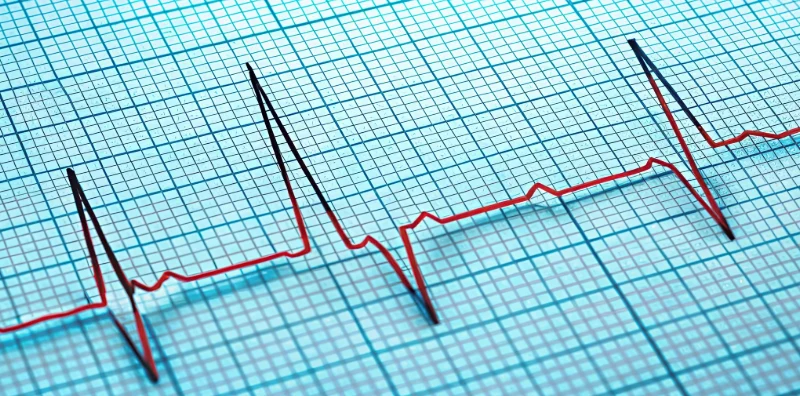Last year, the NY Times had an article entitled This Is Your Body on Sugar (1). I thought this might be a good time to add some more information to their reporting.
First, a few definitions. Table sugar or sucrose is composed of two simple monosaccharides (glucose and fructose) that are linked together. Sucrose is rapidly broken down in the mouth by an enzyme (invertase) into its monosaccharide components of glucose and fructose. It is only monosaccharides that can be absorbed by the body. So, the correct title of the NY Times article should have been “Your Body on Glucose and Fructose”.
This is significant because glucose and fructose rapidly enter the bloodstream, while more complex carbohydrates enter the bloodstream at a slower rate, depending on the composition of the carbohydrate polymer. The sweet taste of sugar is because the glucose and fructose rapidly interact with the taste receptors in the tongue that send signals to the brain that what you are eating is safe because it is sweet (2). This is why eating pasta doesn’t taste like a piece of Halloween candy. It takes longer for the pasta to be broken down into monosaccharides in the small intestine, and by the time it has, it is long past the taste bud receptors in the mouth.
Unfortunately, some facts were left out of the NY Times article. First is that sucrose (i.e., table sugar) that is composed of glucose and fructose is linked together. It is rapidly broken down in the mouth by an enzyme (invertase) into its monosaccharide components of glucose and fructose. These simple sugars (fructose and glucose) are rapidly taken up by the liver. Glucose enters the blood without undergoing any significant metabolism by the liver. As blood glucose levels rise, the hormone insulin is secreted by the pancreas to cause cells to take up this excess glucose for two reasons. The first is that cells can use it for energy (ATP), which is critical for their survival. The second is that excess glucose in the blood (i.e., hyperglycemia) is potentially very reactive and can crosslink to proteins and lipids, causing inflammation and oxidative stress (3).
One particular protein that glucose can crosslink is hemoglobin, the protein that carries oxygen to your cells. This glycosylated hemoglobin is known as HbA1c. The higher the levels of HbA1c in your blood, the more likely you will become either pre-diabetic (about 100 million American adults) or a type 2 diabetic (about 30 million American adults). The lower the glycemic index of other dietary carbohydrates in the form of polymers, the less likely this cross-linking will take place.
The fate of fructose is different. It is rapidly taken up by the liver, just like glucose, but unlike glucose, it is highly metabolized in the liver, often leading to the excess production of uric acid, which can contribute to insulin resistance and fatty liver disease (3). On the other hand, low-glycemic-index carbohydrates don’t seem to have this problem (4).
The NY Times article did ask the question, “What is the right amount of simple sugars to consume?” They estimated that the average American consumes about 67 grams per day. The American Heart Association recommends at least half that level, or about 30 grams per day. I believe it should be significantly lower, such as 15 grams per day. Now you have a problem since fruits contain a lot of fructose and glucose. However, non-starchy vegetables don’t (that’s why they don’t taste sweet).
However, there is one simple sugar that doesn’t have the problems of sucrose, glucose, and fructose. It’s called allulose. It is a rare sugar that is now produced commercially via fermentation. Like glucose and fructose, allulose has a sweet taste. Unlike glucose and fructose, it has no adverse effects on blood sugar levels as it rapidly exits the body after ingestion. This is why food products that use allulose instead of sugar, glucose, or fructose don’t have to declare any added sugars on the label.
Most importantly, the two most significant benefits of using allulose to sweeten your meal are that it increases AMPK activity (6) and enhances the release of GLP-1 from the gut, thereby increasing satiety (7 and 8). Maybe the NY Times was running out of space.

References
1. https://www.nytimes.com/interactive/2024/10/30/well/eat/sugar-health-effects-risks.html
2. Lee AA, Owyang C. Sugars, sweet taste receptors, and brain responses. Nutrients. 9:653 (2017). doi: 10.3390/nu9070653. PMID: 28672790; PMCID: PMC5537773.
3. Giri B, Dey S, Das T, Sarkar M, Banerjee J, Dash SK. Chronic hyperglycemia mediated physiological alteration, and metabolic distortion leads to organ dysfunction, infection, cancer progression and other pathophysiological consequences: An update on glucose toxicity. Biomed Pharmacother. 107:306-328 (2018). doi: 10.1016/j.biopha.2018.07.157.
4. Jensen T, Abdelmalek MF, Sullivan S, Nadeau KJ, Green M, Roncal C, Nakagawa T, Kuwabara M, Sato Y, Kang DH, Tolan DR, Sanchez-Lozada LG, Rosen HR, Lanaspa MA, Diehl AM, Johnson RJ. Fructose and sugar: A major mediator of non-alcoholic fatty liver disease. J Hepatol. 2018 May;68(5):1063-1075. doi: 10.1016/j.jhep.2018.01.019.
5. Willett W, Manson J, Liu S. Glycemic index, glycemic load, and risk of type 2 diabetes. Am J Clin Nutr. 76:274S-280S (2002) doi: 10.1093/ajcn/76/1.274S.
6. Lee GH, Peng C, Lee HY, Park SA, Hoang TH, Kim JH, Sa S, Kim GE, Han JS, Chae HJ. D-allulose ameliorates adiposity through the AMPK-SIRT1-PGC-1α pathway in HFD-induced SD rats. Food Nutr Res. 65:7803 (2021). doi: 10.29219/fnr.v65.7803.
7. Iwasaki Y, Sendo M, Dezaki K, Hira T, Sato T, Nakata M, Goswami C, Aoki R, Arai T, Kumari P, Hayakawa M, Masuda C, Okada T, Hara H, Drucker DJ, Yamada Y, Tokuda M, Yada T. GLP-1 release and vagal afferent activation mediate the beneficial metabolic and chronotherapeutic effects of D-allulose. Nat Commun. 9:113 (2018) doi: 10.1038/s41467-017-02488-y.
8. Cayabyab KB, Shin MJ, Heimuli MS, Kim IJ, D’Agostino DP, Johnson RJ, Koutnik AP, Bellissimo N, Diamond DM, Norwitz NG, Arroyo JA, Reynolds PR, Bikman BT. The metabolic and endocrine effects of a 12-week allulose-rich diet. Nutrients. 16:1821 (2024). doi: 10.3390/nu16121821.




